Thingiverse

Max The Megapod (Large Walking Robot) by vorpal
by Thingiverse
Last crawled date: 3 years ago
Here's a very short Intro Video
This is a supersized (22 inches diameter) version of our extremely popular Vorpal The Hexapod thing:2513566
In the spirit of the season, we've also included an optional Pumpkin Cap for Halloween festivities!
I made this project open source and respectfully ask you to consider supporting the project by buying some or all the parts from our store. We do quality control on all the parts, no counterfeits, everything guaranteed--and you know you're getting the right stuff. Plus our kits cut hours off the build time. Visit our store here:Vorpal Robotics Store with Hexapod Kits and Parts
IMPORTANT NOTE: If you've never built a moderately complex Arduino based robotics project before, you would be much better off starting with our smaller hexapod first. It's easier to build, takes a lot less plastic to print, and is about half the cost in electronics. See Original Vorpal Hexapod Kit
What in the World Is It?
This is an awesome 3d printed, open source, Bluetooth controlled, Scratch programmable walking robot with a 3d printed gamepad. It's a super-sized version of our original Vorpal The Hexapod. It has a 3d printed gamepad that allows it to be controlled via Bluetooth, and it can also be programmed using the Scratch drag-and-drop programming system from MIT (already used in thousands of schools worldwide).
Max The Megapod stands 13 inches (33 cm) tall and is 22" (56 cm) in diameter from toe to toe when in a normal standing position. But despite the size, you only need a printer with an 8" cube (200mm) bed size to print it.
Here is a size comparison showing Max playing alongside Vorpal
NOTE: We would strongly suggest you build our smaller [Vorpal The Hexapod]((https://www.thingiverse.com/thing:2513566) before building this larger project! The parts are much more economical on the smaller robot and it's about an hour or two faster build. Max The Megapod was primarily designed for demonstrations, teacher models so classes could see demonstrations better, Maker Faire exhibits, etc. We were actually surprised at the number of people getting parts for the big robot!
What in the Heck Can it Do?
Quick feature list (See complete details at the Max The Megapod Wiki:
All parts print with no additional supports. The CAP structures have built-in supports that are very easy to remove. Some parts may require brims or rafts for proper bed retention to avoid warping depending on how well your printer is dialed in. But generally, this is a fairly easy print. Minimum bed size is 200mm cube. We do offer a "big parts only" option at our store, if you purchase that then the rest of the parts can be printed on a bed 150mm cube.
60 different motions directly accessible from the 3D printed gamepad, including modes for walking, dancing and fighting. These can be used for many fun activities for Makers or the classroom.
Gamepad has a cool RECORD mode allowing you to record a set of gamepad actions then replay them with a touch of a button, great for classroom activities like "Dance Party!" where students program a choreographed dance routine to a popular song.
Magnetic accessory attachments surround the cap, great for decorations, name plates, or small sensors
An accessory port on the front of the robot allows you to attach optional accessories for games and combat styles, such as Joust, Capture-The-Flag, heavier sensors like ultrasonic rangefinder, etc.
Plug the gamepad into a computer USB port and it becomes a transmitter for the MIT Scratch drag-and-drop programming language!
We have a fully developed set of Scratch extension blocks that let you totally control the robot using Scratch, including reading sensors from the robot and using the values to modify behavior.Scratch Obstacle Avoidance Using Ultrasonic Rangefinder Video
(That video is from our smaller robot, the Megapod works exactly the same way).
Because many schools use Scratch to introduce programming, this makes the Max The Megapod perfect for educational use! The teacher/demo model can be the big robot and the kids build the simpler and cheaper Vorpal version.
For more information see our Vorpal Scratch Programming Guide.
We went beyond the call of duty with Scratch: you can program new hexapod actions in Scratch then upload them to gamepad buttons!
You can have 60 custom actions, triggered by "long tapping" on the mode buttons.
Short tapping executes the default actions again.
Over 1 hour battery life from commonly available 5 cell NIMH batteries (minimum recommended size 4000 mAh and by default we use a Tamiya plug but you can modify if desired.)
Gamepad and robot logic circuits take standard 9v transistor batteries.
All 3D model source files posted publicly on OnShape.com so hack, remix, or extend this design to your heart's content!
All Arduino and Scratch source code posted publicly on GitHub (github.com/vorpalrobotics/vorpalhexapod)
Complete documentation, including build instructions, games and activities, technical information, gamepad and hexapod user guide, are on our wiki. The main page that can get you to all the other pages is here: (http://vorpalrobotics.com/wiki/index.php?title=Maxl_The_Megapod) There is a sidebar that has links to other information pages.
Where Do I Get the Electronics Parts List And Build Instructions?
For complete build instructions and bill of materials, see our build instructions page.
Parts are available from many sources but we would of course like you to consider purchasing all or some parts from our store:Vorpal Robotics Store with Hexapod Kits and Parts
You can purchase full kits, or just the parts you're having trouble finding elsewhere.
The kit that comes from us has these features:
Every single non-3D-printed part you need is included, electronics, servo motors, Bluetooth modules, screws, magnets, the whole 9 yards.
No soldering required; we did the soldering for you! Great for schools who don't what to deal with soldering.
Arduino Nano processors for both gamepad and hexapod are pre-flashed with the control programs; just plug them in and run.
Bluetooth modules in each kit are configured to auto-pair on boot. That means, no cryptic "AT" commands or other frustrating setup to do. Again, plug and play.
The only thing the kit does not include is batteries. See below for battery info.
We also do sell the 3D printed parts if you don't have a 3D printer that meets the minimum requirements: 8" (200mm) cube build area.
We even sell just the "big" parts, allowing you to print the remaining parts on a smaller printer: 6" (150mm) cube build area.
How Do I Print It?
A few notes on what to print and quantities:
Legs: You need six of them.
Leg Hinges and Leg Hinge Rings: you need 12 of each. The rings are optional, if you have trouble with layer separation you will want to use them.
Servo Stopper: you need 12 of them, one for each servo. They retain servos in the legs and base sockets.
Power Harness Top and Bottom: If you buy a kit from us, you don't need these at all, as we create the electrical system for you and we install these. If you are self-sourcing parts, you need two of each of these, preferably one set printed in RED and the other BLACK to correspond to positive and negative voltage levels.
Nameplate is optional.
Joust parts are optional. They're not useful unless you're building two megapods. We will be doing the first ever Megapod Joust at the South Jersey Makerfest on October 20 in Toms River, NJ, see our facebook page for details! Facebook: VorpalTheHexapod
Halloween pumpkin cap is optional. This prints as a single piece, you need a 10" cube build area. The face parts can be glued on. The mouth is very thin in a couple of places allowing you to wrap it around the circumference of the pumpkin.
Everything else: you need one of each other item.
Gamepad note: The gamepad is currently identical with the smaller cousin Vorpal The Hexapod. I have included the STL files again in this project for convenience.
Accessories: We have scaled up the Joust and Eyes accessories, see the Thing Files. We will be scaling up other things like the capture-the-flag game, fidget spinner game, sensor attachments, etc., over the coming weeks.
Cap note: The cap has a built in support, it breaks off easily and its in a place that ends up inside the robot that can't be seen anyway.
The cap and base parts are assembled using #6 screws with nuts. M3 screws would also work.
Does This Thing Really Work?
Our original Vorpal The Hexapod has sold over 1000 kits worldwide and is in use by hundreds of schools as well as many makers, hobbyists, maker spaces, etc. It's gotten glowing reviews on the Make: Magazine website, and we demonstrate it at Maker Faires and other public demos all the time. It was named a "Product of the Year" by the Westport Maker Faire (one of the largest faires in the USA with 15,000 people in attendance). Our demo models run 8 hours a day for multiple days straight with almost no maintenance required other than changing out the batteries!
The Megapod is a new project, but we're bringing that same experience to the Megapod. We've tested it for hours in our workshop and have shown it at a bunch of public demonstrations, and it's holding up very well even with novice drivers banging it around!
We showed Max at the 2018 New York City Maker Faire (50,000 people attended!) and we received a coveted "Editor's Choice Award" by the editors of MAKE: Magazine. (One of the pictures we posted above shows us receiving the award). Crowds were astounded by how fast and agile Max was.
Is This Really Open Source?
All the 3D models are open source, along with the Arduino code for both the hexapod and gamepad, as well as the Scratch block extension. All the electronics are items that are either open source (Arduino Nano, Adafruit servo controller) or standard off the shelf items like hobby BEC for power supply and MG90s mini servos.
For specific open source licenses, see our website's Open Source License Info Page.
Where Do I Get the 3D Models, Software Source Code, and Activity Rules?
3D Model Source is posted publicly on OnShape.com, just create a free login then search for Vorpal Combat Hexapod. If you were not aware of it, OnShape is a professional level cloud-based CAD system.
It's free as long as your project is public, so no cost to you, no install time (runs entirely in your browser). Make a free account in less than a minute and you're up and running with a professional grade system. This site was developed by some of the founders of SolidWorks, so they know what they're doing.
Arduino Source Code and Scratch Extension code is posted publicly on GitHub (github.com/vorpalrobotics/vorpalhexapod)
Activities suitable for hobbyists, Makers, and schools are posted free on our website's Games and Activities Page. These activities are identical to our original, smaller robot Vorpal The Hexapod because the Megapod version is fully compatible with the smaller version.
Battery Info
Gamepad takes a standard 9v transistor battery (either alkaline or rechargeable such as NIMH).
Hexapod takes one 6.0V NIMH battery pack, Tamiya plug, recommended minimum capacity 4000 mAh. These are commonly available at RC and hobby stores, or even Amazon.com. A compatible charger is also needed of course. The robot also requires a 9v battery, we recommend rechargeable, to run the logic circuits. (The 6v battery runs the servo motors).
For a 5000 mAh NIMH you can expect about 70 minutes of runtime, easily enough for classroom use.
(The only reason we don't include these in our kit is that the margins are so low on batteries we would actually lose money by shipping them to people.)
Acknowledgements
Thanks to Science Fiction Author Peter S. Drang for suggesting this supersized megapod project!
This is a supersized (22 inches diameter) version of our extremely popular Vorpal The Hexapod thing:2513566
In the spirit of the season, we've also included an optional Pumpkin Cap for Halloween festivities!
I made this project open source and respectfully ask you to consider supporting the project by buying some or all the parts from our store. We do quality control on all the parts, no counterfeits, everything guaranteed--and you know you're getting the right stuff. Plus our kits cut hours off the build time. Visit our store here:Vorpal Robotics Store with Hexapod Kits and Parts
IMPORTANT NOTE: If you've never built a moderately complex Arduino based robotics project before, you would be much better off starting with our smaller hexapod first. It's easier to build, takes a lot less plastic to print, and is about half the cost in electronics. See Original Vorpal Hexapod Kit
What in the World Is It?
This is an awesome 3d printed, open source, Bluetooth controlled, Scratch programmable walking robot with a 3d printed gamepad. It's a super-sized version of our original Vorpal The Hexapod. It has a 3d printed gamepad that allows it to be controlled via Bluetooth, and it can also be programmed using the Scratch drag-and-drop programming system from MIT (already used in thousands of schools worldwide).
Max The Megapod stands 13 inches (33 cm) tall and is 22" (56 cm) in diameter from toe to toe when in a normal standing position. But despite the size, you only need a printer with an 8" cube (200mm) bed size to print it.
Here is a size comparison showing Max playing alongside Vorpal
NOTE: We would strongly suggest you build our smaller [Vorpal The Hexapod]((https://www.thingiverse.com/thing:2513566) before building this larger project! The parts are much more economical on the smaller robot and it's about an hour or two faster build. Max The Megapod was primarily designed for demonstrations, teacher models so classes could see demonstrations better, Maker Faire exhibits, etc. We were actually surprised at the number of people getting parts for the big robot!
What in the Heck Can it Do?
Quick feature list (See complete details at the Max The Megapod Wiki:
All parts print with no additional supports. The CAP structures have built-in supports that are very easy to remove. Some parts may require brims or rafts for proper bed retention to avoid warping depending on how well your printer is dialed in. But generally, this is a fairly easy print. Minimum bed size is 200mm cube. We do offer a "big parts only" option at our store, if you purchase that then the rest of the parts can be printed on a bed 150mm cube.
60 different motions directly accessible from the 3D printed gamepad, including modes for walking, dancing and fighting. These can be used for many fun activities for Makers or the classroom.
Gamepad has a cool RECORD mode allowing you to record a set of gamepad actions then replay them with a touch of a button, great for classroom activities like "Dance Party!" where students program a choreographed dance routine to a popular song.
Magnetic accessory attachments surround the cap, great for decorations, name plates, or small sensors
An accessory port on the front of the robot allows you to attach optional accessories for games and combat styles, such as Joust, Capture-The-Flag, heavier sensors like ultrasonic rangefinder, etc.
Plug the gamepad into a computer USB port and it becomes a transmitter for the MIT Scratch drag-and-drop programming language!
We have a fully developed set of Scratch extension blocks that let you totally control the robot using Scratch, including reading sensors from the robot and using the values to modify behavior.Scratch Obstacle Avoidance Using Ultrasonic Rangefinder Video
(That video is from our smaller robot, the Megapod works exactly the same way).
Because many schools use Scratch to introduce programming, this makes the Max The Megapod perfect for educational use! The teacher/demo model can be the big robot and the kids build the simpler and cheaper Vorpal version.
For more information see our Vorpal Scratch Programming Guide.
We went beyond the call of duty with Scratch: you can program new hexapod actions in Scratch then upload them to gamepad buttons!
You can have 60 custom actions, triggered by "long tapping" on the mode buttons.
Short tapping executes the default actions again.
Over 1 hour battery life from commonly available 5 cell NIMH batteries (minimum recommended size 4000 mAh and by default we use a Tamiya plug but you can modify if desired.)
Gamepad and robot logic circuits take standard 9v transistor batteries.
All 3D model source files posted publicly on OnShape.com so hack, remix, or extend this design to your heart's content!
All Arduino and Scratch source code posted publicly on GitHub (github.com/vorpalrobotics/vorpalhexapod)
Complete documentation, including build instructions, games and activities, technical information, gamepad and hexapod user guide, are on our wiki. The main page that can get you to all the other pages is here: (http://vorpalrobotics.com/wiki/index.php?title=Maxl_The_Megapod) There is a sidebar that has links to other information pages.
Where Do I Get the Electronics Parts List And Build Instructions?
For complete build instructions and bill of materials, see our build instructions page.
Parts are available from many sources but we would of course like you to consider purchasing all or some parts from our store:Vorpal Robotics Store with Hexapod Kits and Parts
You can purchase full kits, or just the parts you're having trouble finding elsewhere.
The kit that comes from us has these features:
Every single non-3D-printed part you need is included, electronics, servo motors, Bluetooth modules, screws, magnets, the whole 9 yards.
No soldering required; we did the soldering for you! Great for schools who don't what to deal with soldering.
Arduino Nano processors for both gamepad and hexapod are pre-flashed with the control programs; just plug them in and run.
Bluetooth modules in each kit are configured to auto-pair on boot. That means, no cryptic "AT" commands or other frustrating setup to do. Again, plug and play.
The only thing the kit does not include is batteries. See below for battery info.
We also do sell the 3D printed parts if you don't have a 3D printer that meets the minimum requirements: 8" (200mm) cube build area.
We even sell just the "big" parts, allowing you to print the remaining parts on a smaller printer: 6" (150mm) cube build area.
How Do I Print It?
A few notes on what to print and quantities:
Legs: You need six of them.
Leg Hinges and Leg Hinge Rings: you need 12 of each. The rings are optional, if you have trouble with layer separation you will want to use them.
Servo Stopper: you need 12 of them, one for each servo. They retain servos in the legs and base sockets.
Power Harness Top and Bottom: If you buy a kit from us, you don't need these at all, as we create the electrical system for you and we install these. If you are self-sourcing parts, you need two of each of these, preferably one set printed in RED and the other BLACK to correspond to positive and negative voltage levels.
Nameplate is optional.
Joust parts are optional. They're not useful unless you're building two megapods. We will be doing the first ever Megapod Joust at the South Jersey Makerfest on October 20 in Toms River, NJ, see our facebook page for details! Facebook: VorpalTheHexapod
Halloween pumpkin cap is optional. This prints as a single piece, you need a 10" cube build area. The face parts can be glued on. The mouth is very thin in a couple of places allowing you to wrap it around the circumference of the pumpkin.
Everything else: you need one of each other item.
Gamepad note: The gamepad is currently identical with the smaller cousin Vorpal The Hexapod. I have included the STL files again in this project for convenience.
Accessories: We have scaled up the Joust and Eyes accessories, see the Thing Files. We will be scaling up other things like the capture-the-flag game, fidget spinner game, sensor attachments, etc., over the coming weeks.
Cap note: The cap has a built in support, it breaks off easily and its in a place that ends up inside the robot that can't be seen anyway.
The cap and base parts are assembled using #6 screws with nuts. M3 screws would also work.
Does This Thing Really Work?
Our original Vorpal The Hexapod has sold over 1000 kits worldwide and is in use by hundreds of schools as well as many makers, hobbyists, maker spaces, etc. It's gotten glowing reviews on the Make: Magazine website, and we demonstrate it at Maker Faires and other public demos all the time. It was named a "Product of the Year" by the Westport Maker Faire (one of the largest faires in the USA with 15,000 people in attendance). Our demo models run 8 hours a day for multiple days straight with almost no maintenance required other than changing out the batteries!
The Megapod is a new project, but we're bringing that same experience to the Megapod. We've tested it for hours in our workshop and have shown it at a bunch of public demonstrations, and it's holding up very well even with novice drivers banging it around!
We showed Max at the 2018 New York City Maker Faire (50,000 people attended!) and we received a coveted "Editor's Choice Award" by the editors of MAKE: Magazine. (One of the pictures we posted above shows us receiving the award). Crowds were astounded by how fast and agile Max was.
Is This Really Open Source?
All the 3D models are open source, along with the Arduino code for both the hexapod and gamepad, as well as the Scratch block extension. All the electronics are items that are either open source (Arduino Nano, Adafruit servo controller) or standard off the shelf items like hobby BEC for power supply and MG90s mini servos.
For specific open source licenses, see our website's Open Source License Info Page.
Where Do I Get the 3D Models, Software Source Code, and Activity Rules?
3D Model Source is posted publicly on OnShape.com, just create a free login then search for Vorpal Combat Hexapod. If you were not aware of it, OnShape is a professional level cloud-based CAD system.
It's free as long as your project is public, so no cost to you, no install time (runs entirely in your browser). Make a free account in less than a minute and you're up and running with a professional grade system. This site was developed by some of the founders of SolidWorks, so they know what they're doing.
Arduino Source Code and Scratch Extension code is posted publicly on GitHub (github.com/vorpalrobotics/vorpalhexapod)
Activities suitable for hobbyists, Makers, and schools are posted free on our website's Games and Activities Page. These activities are identical to our original, smaller robot Vorpal The Hexapod because the Megapod version is fully compatible with the smaller version.
Battery Info
Gamepad takes a standard 9v transistor battery (either alkaline or rechargeable such as NIMH).
Hexapod takes one 6.0V NIMH battery pack, Tamiya plug, recommended minimum capacity 4000 mAh. These are commonly available at RC and hobby stores, or even Amazon.com. A compatible charger is also needed of course. The robot also requires a 9v battery, we recommend rechargeable, to run the logic circuits. (The 6v battery runs the servo motors).
For a 5000 mAh NIMH you can expect about 70 minutes of runtime, easily enough for classroom use.
(The only reason we don't include these in our kit is that the margins are so low on batteries we would actually lose money by shipping them to people.)
Acknowledgements
Thanks to Science Fiction Author Peter S. Drang for suggesting this supersized megapod project!
Similar models
thingiverse
free
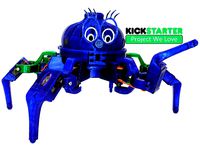
Vorpal The Hexapod Walking Robot by vorpal
...;t include these in our kit is that the margins are so low on batteries we would actually lose money by shipping them to people.)
cults
free
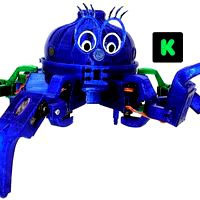
Vorpal Combat Hexapod Robot
... parts at our website www.vorpalrobotics.com. there are also complete build instructions, game rules, and other resources there.
grabcad
free

Vorpal Combat Hexapod
...rims are required for the cap, base, and electronics caddy parts of the hexapod. no parts require any supports, they print as-is.
thingiverse
free
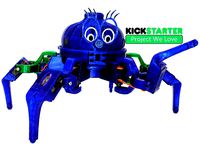
Vorpal Hexapod Joust Game by vorpal
...r me at least, they never fall out. if they fall out for you i'm sure a drop of superglue or hot glue will solve the problem.
thingiverse
free

Vorpal Hexapod Light Sensor Bracket by vorpal
...you to attach a keyes ky-018 light sensor (or similar clones) to your vorpal hexapod for use with scratch...
thingiverse
free
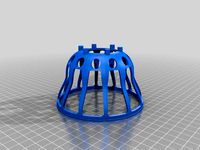
Vorpal Hexapod Stand by vorpal
...tors.
printing
i recommend you turn on brims (or rafts if you prefer, but in my opinion brims are much easier to cleanly remove).
thingiverse
free

Vorpal Hexapod Capture The Flag Game Pieces by vorpal
...r me at least, they never fall out. if they fall out for you i'm sure a drop of superglue or hot glue will solve the problem.
thingiverse
free

Vorpal Hexapod Coaster/Whiteboard Magnet by vorpal
...other diameters, or even square magnet sheets, will of course also work). these are available from craft stores and amazon.com.
thingiverse
free
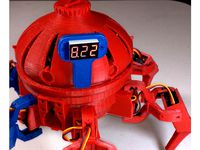
Vorpal Hexapod Battery Voltmeter Mount by vorpal
...ale jumper to either gnd pin on the nano.
this puts the meter in parallel with the nano, and it will display raw battery voltage.
thingiverse
free
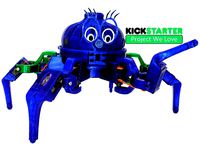
Vorpal Hexapod Name Plates by vorpal
...r me at least, they never fall out. if they fall out for you i'm sure a drop of superglue or hot glue will solve the problem.
Vorpal
turbosquid
$10

vorpal scifi.max
... available on turbo squid, the world's leading provider of digital 3d models for visualization, films, television, and games.
turbosquid
free
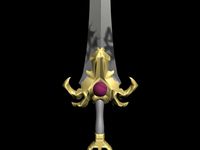
Vorpal Edge
... available on turbo squid, the world's leading provider of digital 3d models for visualization, films, television, and games.
thingiverse
free
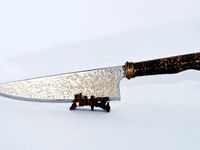
Vorpal Blade Stand by 3dlyx
...vorpal blade stand by 3dlyx
thingiverse
a tiny but stable stand to display beautiful alice's beautiful vorpal blade
thingiverse
free

Crosseyed Vorpal Eyes by Helensdad
...ad
thingiverse
a pair of crossed eyes for vorpal the hexapod. just needs brim removing and a light sanding. paint as you wish...
thingiverse
free

Vorpal Boots by adstaggs
...vorpal boots by adstaggs
thingiverse
https://www.youtube.com/watch?v=q5jiruos_bw
thingiverse
free

Vorpi TPU sneakers ( for Vorpal The Hexapod )
...d )
thingiverse
super-stylish sneakers for vorpal the hexapod
( https://www.thingiverse.com/thing:2513566 )
designed by urukalo
thingiverse
free

Vorpal Lock by nexnox
...ne, two! and through and through
the vorpal blade went snicker-snack!
he left it dead, and with its head
he went galumphing back.
thingiverse
free

Vorpal the Hexapod Dalek eye by Helensdad
...apod dalek eye by helensdad
thingiverse
single eye on a stick for vorpal, inspired by the daleks from the uk sci fi show dr who.
thingiverse
free

Vorpal Hexapod Light Sensor Bracket by vorpal
...d go to any unused servo controller port, and the signal should go to one of the analog ports that scratch can access (a3 or a6).
thingiverse
free

Vorpal Hexapod Coaster/Whiteboard Magnet by vorpal
...other diameters, or even square magnet sheets, will of course also work). these are available from craft stores and amazon.com.
Walking
design_connected
$4
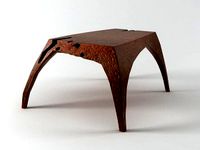
Walking
...walking
designconnected
chista walking computer generated 3d model.
3d_export
$5

walking machine
...walking machine
3dexport
walking machine in solid works
3ddd
$1

Walking Cabinet
...walking cabinet
3ddd
тумба , markus johansson
walking cabinet
3d_export
$10
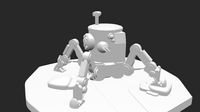
a walking bunker
...a walking bunker
3dexport
this is a walking bunker that is eguipped with a double machine and a vizer/
turbosquid
$20
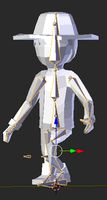
walking man
...quid
royalty free 3d model walking man for download as blend on turbosquid: 3d models for games, architecture, videos. (1219967)
turbosquid
$19

Walking girl
...squid
royalty free 3d model walking girl for download as fbx on turbosquid: 3d models for games, architecture, videos. (1495941)
turbosquid
$55
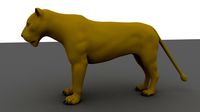
lion walking
...
royalty free 3d model lion walking for download as ma and ma on turbosquid: 3d models for games, architecture, videos. (1604914)
turbosquid
$5

Walking Bridge
...yalty free 3d model walking bridge for download as ma and obj on turbosquid: 3d models for games, architecture, videos. (1523555)
3d_export
$7

walking closet
...walking closet
3dexport
turbosquid
$4

Walking Stick
...3d model walking stick for download as 3ds, obj, c4d, and fbx on turbosquid: 3d models for games, architecture, videos. (1496622)
Robot
3d_ocean
$20

Robot
...robot
3docean
character metal robot robot robotic white
robot model for 3dsmax 2009 and greater
3d_ocean
$45
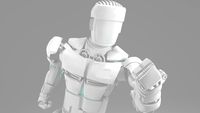
Robot
...robot
3docean
fighing machine robot
a fighting robot from the scrapyard.
3d_ocean
$18
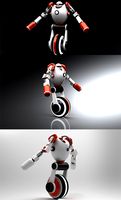
Robot
...robot
3docean
machin robot science fiction
high poly robot.
3d_export
$7

Robot
...robot
3dexport
robot
3d_export
$5
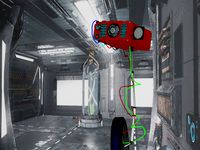
robot
...robot
3dexport
robot
3d_export
free

Robot
...robot
3dexport
robot
turbosquid
$10

Robot/ Alien Robot
...
royalty free 3d model robot/ alien robot for download as max on turbosquid: 3d models for games, architecture, videos. (1442828)
3d_export
$5

robot
...robot
3dexport
robot in blender
3ddd
$1

robot
...robot
3ddd
робот
robot
3ddd
$1

Robot
...robot
3ddd
робот
robot
Large
3d_export
$15

large excavator
...large excavator
3dexport
large excavator
design_connected
$22

Daydream large
...daydream large
designconnected
dedon daydream large computer generated 3d model. designed by frinier, richard.
design_connected
$7
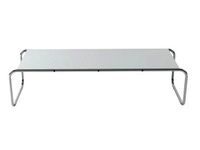
Laccio Large
...laccio large
designconnected
knoll laccio large computer generated 3d model. designed by breuer, marcel.
3ddd
$1

MOLTENI LARGE
... подушка , плед
диван molteni&c; модель large
3ddd
$1
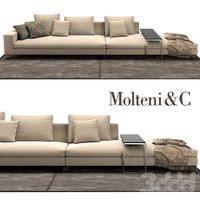
Molteni Large
... подушка , плед
диван molteni&c; модель large
3ddd
$1

CLAUDINE LARGE
...audine large
3ddd
claudine large , arflex
модель сделана в размерах и цветах аналога ...
design_connected
$11

Ovo Large
...ovo large
designconnected
cor ovo large armchairs computer generated 3d model. designed by studio vertijet.
design_connected
$4

Cu Large
...cu large
designconnected
kristalia cu large coffee tables computer generated 3d model. designed by monica graffeo.
3d_ocean
$18

Large sausage
...rge meat mental ray obj photorealistic sausage scanned vray
scanned 3d model of large sausage placed on rectangular wooden board.
design_connected
$16
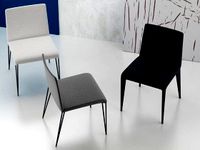
Filly Large
...onnected
photo-realistic 3d models of the filly large chair from bonaldo for 3d architectural and interior design presentations.

